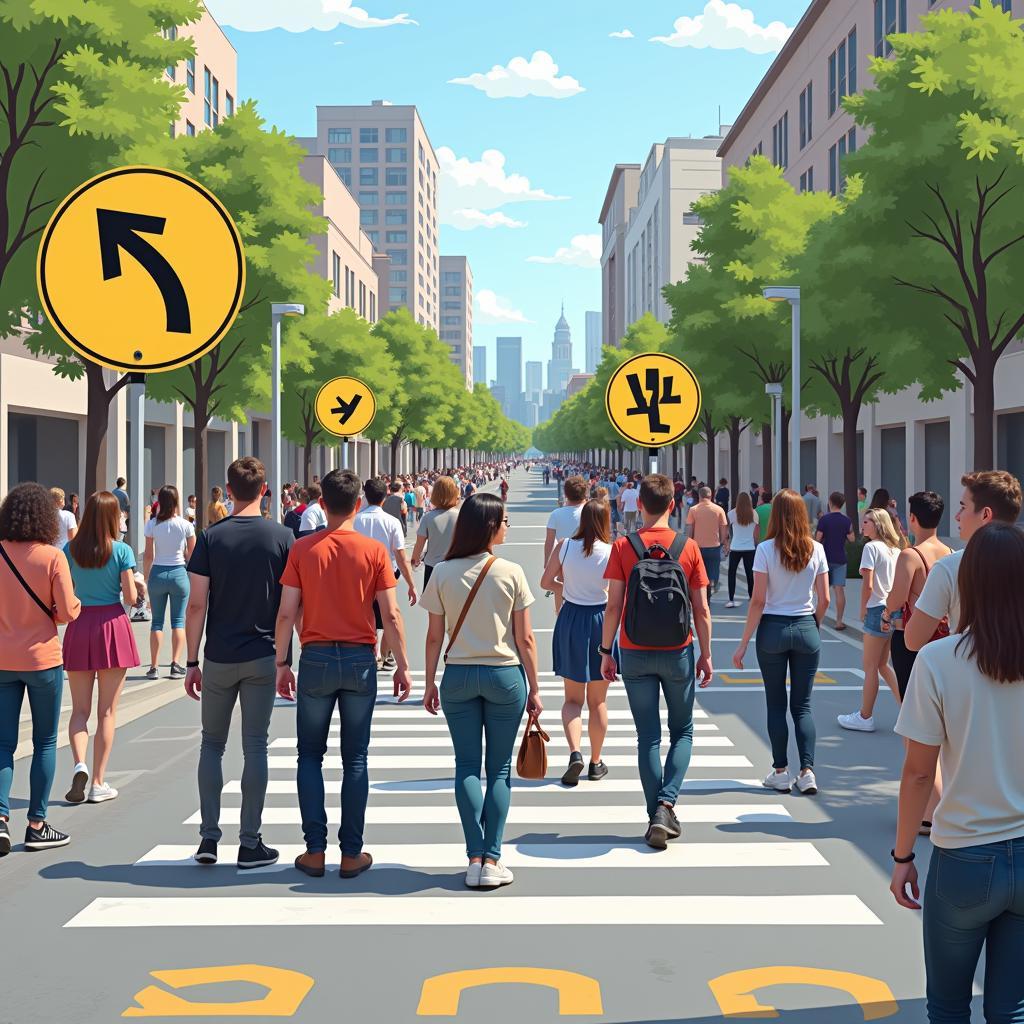Society, a complex web of interactions and relationships, shapes our lives in profound ways. Understanding the Functions Of Society is crucial to navigating its complexities and contributing to its positive evolution. From the earliest hunter-gatherer groups to our modern interconnected world, society has served fundamental purposes, enabling human survival, development, and progress. This article delves into these vital functions, exploring their impact on individuals and the collective whole.
The essential functions of society provide a framework for understanding how human groups organize themselves and address their basic needs. These functions, while diverse, are interconnected and contribute to the overall stability and well-being of society. They encompass everything from ensuring basic survival to fostering a sense of belonging and shared identity.
Key Functions: Meeting Basic Needs and Ensuring Survival
At its core, society’s primary function is ensuring the survival of its members. This involves providing for basic needs like food, shelter, and security. Early societies relied on cooperative hunting and gathering, while modern societies have developed complex economic systems to produce and distribute resources. This fundamental function highlights the inherent interdependence within human communities. Providing security, both internally through law enforcement and externally through defense mechanisms, is another crucial aspect of societal survival. Without these basic provisions, the very existence of a society would be threatened.
Beyond mere survival, society plays a vital role in fostering social order and regulating behavior. This is achieved through the establishment of norms, laws, and institutions. These frameworks provide structure and predictability, allowing individuals to interact with a degree of certainty and reducing the potential for conflict. Think about the role of the TLC Humane Society in Dahlonega, GA, providing a vital service to the community. This illustrates how even specialized organizations contribute to the broader societal fabric. They perform important functions relating to animal welfare and community responsibility, contributing to a more compassionate and harmonious social environment.
 Social Order and Regulation in Society
Social Order and Regulation in Society
Socialization and Cultural Transmission: Shaping Individuals and Society
Socialization is the process by which individuals learn the norms, values, and beliefs of their society. This essential function ensures the continuity of culture and traditions across generations. Family, education systems, religious institutions, and even media play a crucial role in shaping individual behavior and integrating members into the larger social fabric. Through socialization, individuals acquire the knowledge and skills necessary to participate effectively in society. For example, understanding why laws are needed in society is a key aspect of socialization, fostering responsible citizenship. It enables individuals to appreciate the importance of rules and regulations in maintaining social order and promoting peaceful coexistence.
 Cultural Transmission Across Generations
Cultural Transmission Across Generations
The Humane Society of Santa Maria, California, highlights another key function of society – caring for vulnerable members. This reflects the societal value placed on compassion and mutual support. Such organizations play a vital role in strengthening the social fabric by addressing the needs of those who require assistance.
Fostering Cooperation and Collaboration: Achieving Common Goals
Society thrives on cooperation and collaboration. Working together allows individuals and groups to achieve common goals that would be unattainable individually. This principle is evident in everything from community projects to international collaborations. The collective effort allows for the pooling of resources, knowledge, and skills, leading to greater efficiency and effectiveness. Consider how a diagram accurately reflects how a historical society functions, showcasing the interconnectedness and collaborative nature of different societal elements. Such visualizations help us understand how various parts of society work together to achieve shared objectives.
Functions of Society: A Foundation for Peace
Ultimately, understanding the functions of society can contribute to a more peaceful world. By recognizing our interconnectedness and the importance of collaboration, we can build bridges across cultures and foster greater understanding. When we appreciate the role society plays in meeting our basic needs and shaping our identities, we are better equipped to address social challenges and work towards a more just and equitable future. The Humane Society in Pasco, WA, exemplifies this, serving as a focal point for community engagement and collaborative action towards animal welfare.
Conclusion
The functions of society are multifaceted, ranging from providing for basic survival to fostering cultural transmission and promoting cooperation. Understanding these functions is crucial for navigating the complexities of human interaction and contributing to a more harmonious and productive society. By recognizing our shared humanity and working together to address common challenges, we can create a more peaceful and prosperous future for all. The functions of society serve as a roadmap for building a better world, one where collaboration and understanding pave the way for a brighter tomorrow.
FAQ
- What are the core functions of society? The core functions of society include ensuring survival, maintaining social order, transmitting culture, and fostering cooperation.
- How does socialization contribute to societal stability? Socialization teaches individuals the norms and values of their society, promoting conformity and reducing the likelihood of disruptive behavior.
- Why is cooperation essential for societal progress? Cooperation allows individuals and groups to pool resources and achieve common goals that would be unattainable individually.
- How can understanding the functions of society promote peace? Recognizing our interconnectedness and the importance of collaboration can foster greater understanding and bridge divides between cultures.
- What role do institutions play in fulfilling societal functions? Institutions like schools, governments, and religious organizations play a key role in providing structure, regulating behavior, and transmitting cultural values.
- How do societal functions evolve over time? Societal functions adapt to changing circumstances and technological advancements, reflecting the dynamic nature of human societies.
- What is the relationship between individual needs and societal functions? Societal functions are designed to meet the basic needs of individuals while also promoting the overall well-being of the collective.
Further Exploration
- Which diagram accurately reflects how a historical society functions?
- For information on animal welfare and community support, explore resources like Humane Society Santa Maria California and TLC Humane Society Dahlonega GA.
- Understanding the necessity of laws within a societal framework can be further explored in the article “why are laws needed in society?”
- For local resources and support related to animal welfare, consider looking into the Humane Society Pasco WA.
Need support? Contact us 24/7:
Phone: 02043854663
Email: [email protected]
Address: Khu 34, Bac Giang, 260000, Vietnam.